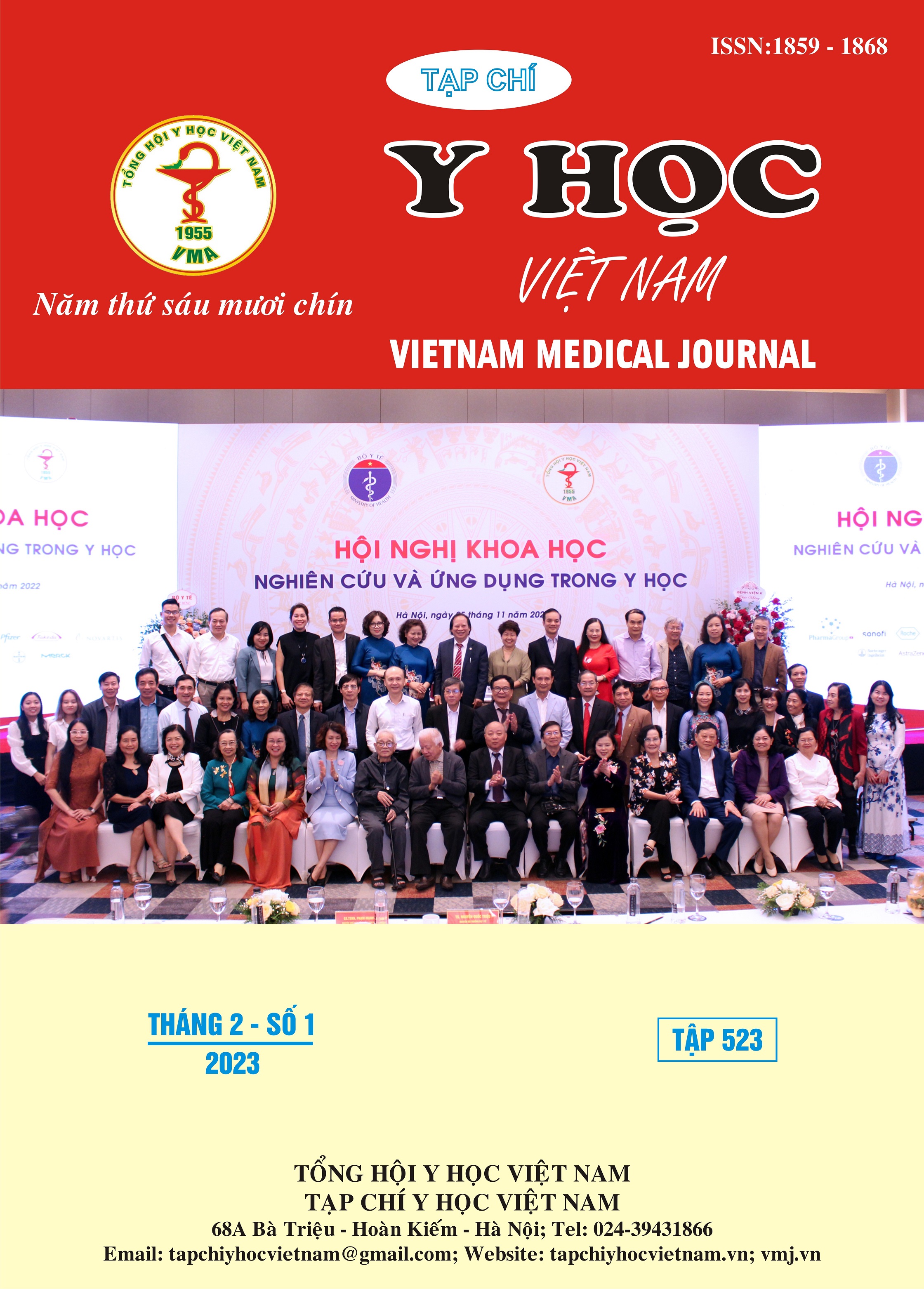RESULTS OF TREATMENT IN LOCALLY ADVANCED CERCICAL CANCER WITH VMAT RADIATION THERAPY CONCOMITANT CHEMOTHERAPY AND 3D BRACHYTHERAPY AT HOSPITAL K
Main Article Content
Abstract
Objectives: The aims of our study were to evaluate the result of concurrent chemoradiotherapy in locally advanced cervical cancer using VMAT radiotherapy combined 3D brachytherapy and early toxicities of this treatment method in K hospital. Patients and Methods: Clinical intervention study without control group on 35 patients with locally advanced stage cervical cancer (stage IB3 to IVA according to FIGO 2018) received concurrent chemoradiotherapy with external radiation using VMAT radiotherapy and weekly Cisplatin chemotherapy, followed by 3D brachytherapy from January 2021 to January 2022 at the hospital K. The primary end point was the rate of treatment response, the secondary endpoint is the early toxicity of the regimen and some factors related to the treatment outcome. Results: Concurrent chemoradiotherpy with VMAT external radiation combined with Cisplatin 40mg/m2 weekly regimen followed by 3D brachytherapy on the group of patients with locally advanced stage cervical cancer gave a significantly high rate of response 97,1%; of which complete response is 91,4%. In terms of toxicity, the hematopoietic system is heavily influenced by chemotherapy and radiotherapy. The rates of low hemoglobin count, neutropenia and thrombocytopenia were 54,2%; 85,7% and 68,6% respectively. At the time of follow-up 6 months from the end of treatment, complication of vaginal stenosis was the most common occurring in 85.7% of patients, the rate of grade 2 vaginal stenosis accounted for 51.4%. Conclusion: Simultaneous chemoradiotherapy using VMAT technique combined with 3D brachytherapy for cervical cancer in the locally advanced stage gave a high response rate; 97.1%. The hematopoietic system is subject to toxicity of the regimen, the rate of low hemoglobin, neutropenia and thrombocytopenia is 54,2%; 85,7% and 68,6%, respectively. The most common late complication at 6 months since the end of treatment is vaginal stenosis; accounted for 85,7%.
Article Details
Keywords
Ung thư cổ tử cung, hóa xạ đồng thời triệt căn, kĩ thuật VMAT, xạ áp sát 3D
References
2. Cibula D, Pötter R, Planchamp F, et al. The European Society of Gynaecological Oncology/European Society for Radiotherapy and Oncology/European Society of Pathology Guidelines for the Management of Patients With Cervical Cancer. Int J Gynecol Cancer Off J Int Gynecol Cancer Soc. 2018;28(4):641-655. doi:10.1097/IGC.0000000000001216
3. Xie M, Ding X, Chen A, et al. Efficacy and Safety of Image-Guided Intensity-Modulated Radiation Therapy and Volumetric Modulated Arc Therapy Combined with Paclitaxel Liposomes and Cisplatin for Locally Advanced Stage IIB–IIIB Cervical Cancer: A Retrospective Study at a Single Center. Med Sci Monit. 2020;26. doi:10.12659/MSM.927563
4. Tô Anh Dũng. Đánh giá kết quả hóa xạ đồng thời ung thư biểu mô vảy cổ tử cung giai đoạn IIB, IIIB tại bệnh viện K. Published online 2017.
5. Nguyễn Tiến Quang. Nghiên cứu ứng dụng xạ trị áp sát suất liều cao kết hợp với xạ ngoài và cisplatin trong điều trị ung thư cổ tử cung giai đoạn IIB-IIIB. Published online 2013.
6. Kirchheiner K, Nout RA, Lindegaard JC, et al. Dose-effect relationship and risk factors for vaginal stenosis after definitive radio (chemo) therapy with image-guided brachytherapy for locally advanced cervical cancer in the EMBRACE study. Radiother Oncol J Eur Soc Ther Radiol Oncol. 2016; 118 (1): 160-166. doi: 10.1016/ j.radonc. 2015.12.025


